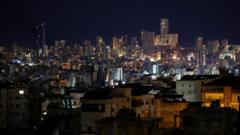The eruption of Mount Kanlaon has prompted a substantial evacuation as authorities issue warnings of further explosive activity. The incident raises awareness of the risks posed by the Philippines' geographical positioning on the Pacific Ring of Fire.
Mass Evacuation in Philippines as Mount Kanlaon Erupts

Mass Evacuation in Philippines as Mount Kanlaon Erupts
Nearly 90,000 residents of Negros island evacuate as volcanic activity increases, with potential for future eruptions.
The Philippine authorities have initiated a significant evacuation, ordering nearly 90,000 individuals to leave the central island of Negros following the eruption of Mount Kanlaon. The eruption, which occurred on Monday afternoon, sent a plume of ash, lava, and volcanic rocks soaring two miles into the air, presenting immediate hazards to surrounding communities.
Teresito Bacolcol, head of the Philippine Institute of Volcanology and Seismology, emphasized the destruction potential of volcanic phenomena, stating, "This is very destructive and it can burn everything in its path, including vegetation, buildings and humans. This can kill." In light of the eruption, the alert level for Mount Kanlaon was upgraded to 3, indicating an increased risk of more powerful eruptions. The maximum alert level is 5.
A designated danger zone has been established, extending six kilometers (3.7 miles) from the volcano's summit. Within this zone, approximately 47,000 residents of La Castellana face evacuation. Local officials have set up the Panaad Stadium in Bacolod City, which can house up to 30,000 evacuees, as the main shelter, with additional shelters available across eleven villages to accommodate those in need.
The Philippines is home to around 100 volcanoes, with 24 currently active. Positioned along the Pacific Ring of Fire, the country faces heightened volcanic and seismic activity risks, with Mount Kanlaon recognized for its history of sporadic eruptions, totaling over 40 since 1866. Notably, an eruption in 1996 resulted in the tragic loss of three hikers.























